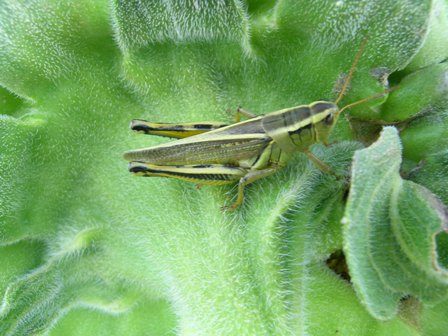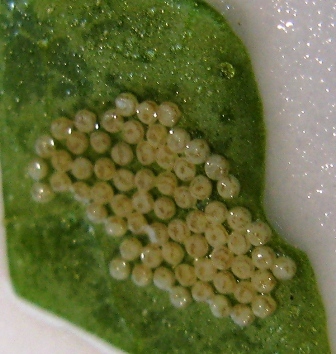Manitoba Insect and Disease Update: Week of July 15, 2013
- John Gavloski, Entomologist
Manitoba Agriculture, Food and Rural Initiatives
Phone: (204) 745-5668
Fax: (204) 745-5690. - Holly Derksen, Plant Pathologist
Manitoba Agriculture, Food and Rural Initiatives
Phone: (204) 750-4248
Fax: (204) 745-5690
Insects in Canola: Currently the insect populations of potential insect pests are relatively low and below economic thresholds in most areas, with the exception of grasshopper populations being high around the edges of some fields. Although the eastern part of Manitoba did have some high levels of adults of diamondback moth in the pheromone-baited traps, levels of larvae have not been high. Some larvae can be found but at levels well below economic threshold. In some areas, larvae are starting to turn to pupae, completing the first generation.
Bertha armyworm moth counts are at moderate to high levels in some areas; see table below.
Lygus bugs can be found in canola, but so far no levels approaching economic threshold have been reported.
Insects in Cereal Crops: Currently there are no economic population of insects being reported in cereal crops, aside from some grasshopper control being needed. Most of the grasshopper control has been around field edges so far. We are just starting to see adult grasshoppers now. Based on populations in the Carman area, the twostriped grasshopper (Melanoplus bivittatus) seems to be the most common species of grasshopper this year.

Twostriped grasshopper adult
Aphids are starting to show up in some cereal fields, but so far no populations approaching economic threshold have been noted. Natural enemies can often help keep aphid populations below economic levels.
Surveys and Forecasts

Egg mass of bertha armyworm
Risk of bertha armyworm based on moth capture in pheromone-baited traps
0-300 = Low risk 300-900= Uncertain risk 900-1,200= Moderate risk 1,200+= High risk | |
|---|---|
| Location | Total Count |
| Elm Creek | 1070 M |
| Zelena (north of Roblin) | 969 M |
| Sperling | 967 M |
| Ridgeville | 770 U |
| Makaroff | 758 U |

